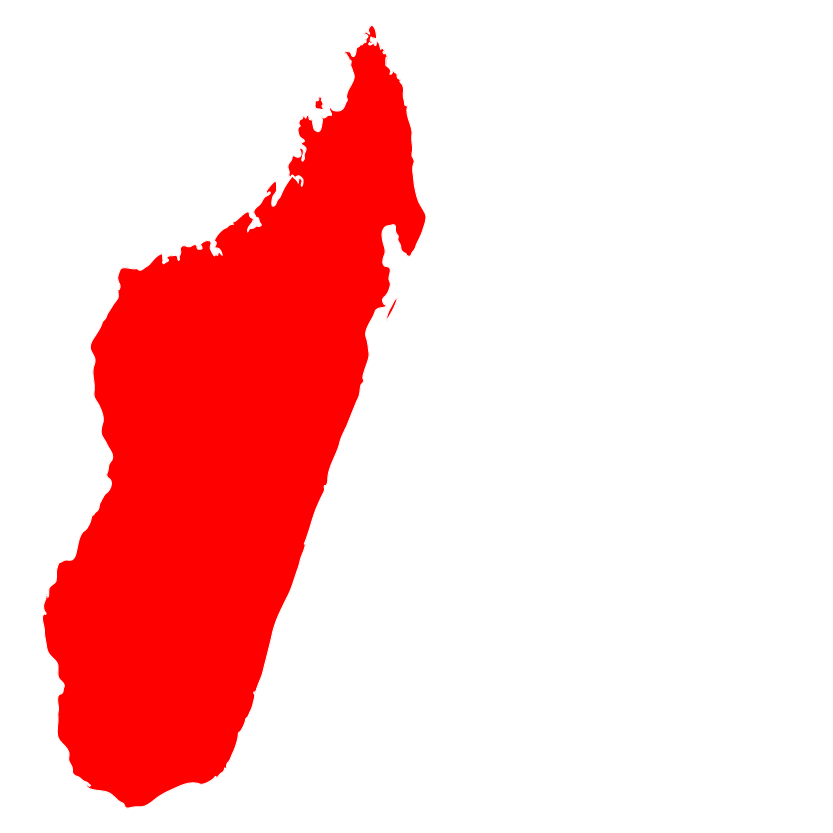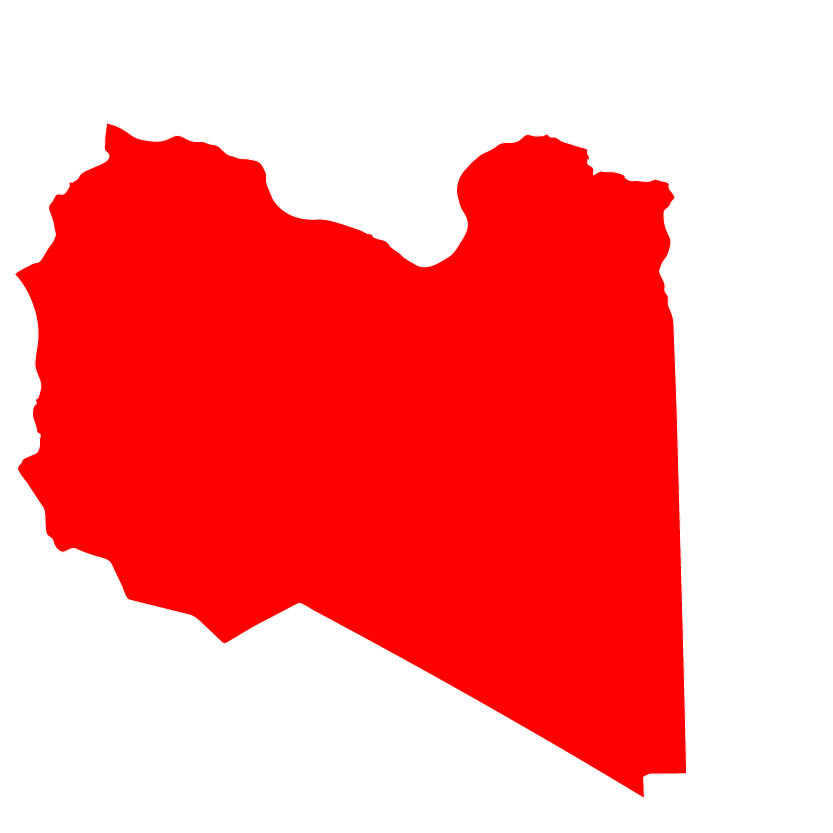Madagascar: Cyclone Eloise.

In the evening of Tuesday 19th January 2021, at 7.30 p.m. local time, the region of SAVA in Madagascar, was affected by an intense tropical cyclone from the Indian Ocean named ELOISE (Meteorological department Madagascar). Tropical cyclone Eloise came with winds reaching up to 100 Km/hour, touching the south of Antalaha district. The cyclone has also brought heavy rains of 100mm over 24 hours to several districts in the North West coast of Madagascar. Homes have been damaged and agriculture land destroyed leaving a high possibility of landslides. The intense tropical storm is foreseen to pass the Region of Analanjirofo, Sofia, Boeny and Melaky.
The dire situation is further compounded for the cyclone affected people with vulnerabilities and those belonging to a lower cast. Affected households are living with limited food stocks.
ACT Madagascar forum member SAF/FJKM (The Church of Jesus Christ in Madagascar) is ready to respond, by providing basic immediate needs to the affected persons in the coming weeks.
Madagascar_Cyclone Eloise
Indonesia: West Sulawesi Earthquake (Updated)
A 6.2 magnitude earthquake hit the districts of Majene, Mamuju and Polewali Mandarin in West Sulawesi, Indonesia on 15th January, 2021. This was preceded by a 5.9 magnitude earthquake in the same region. Recent reports from UN OCHA and BNPB said that it caused damages to 300 houses, 1 bridge, 2 hospitals, 1 port, 1 hotel, 2 government offices, landslide on 3 spots, 242 casualties, 189 people with serious injuries, 637 people with minor injuries, and around 15,000 people are in evacuation centers where they will . The number of casualties is predicted to increase as reports from local authorities will come in. The earthquake has also affected and disrupted the community’ activities such as health facilities (including hospitals), offices, marketplaces, shops, and religious facilities. The disaster has also resulted in the cut-off of electricity, communication, water, transportation access (by air and land), and lack of food security. Indonesian government has started to deploy rescue and assistance to the affected areas.
ACT Indonesia Forum plans to give assistance to 5,000 people affected by the earthquake through ACT Alliance’s Rapid Response Fund. They plan to aid and support the disruption of health services, household items, protection for vulnerable groups, shelter materials, WASH services and materials, and assistance to support the disruption of livelihoods.
ALERT Indonesia West Sulawesi Earthquake
Alert 01 2021 Summer Floods Brazil Sao Paulo

Alert 01 2021 Brazil Summer Floods Sao Paulo
On the morning of Wednesday the 6 January 2021, the district of Sao Paulo in Brazil , was hit by summer storms.
The São Paulo State is home of around 45 million people ranging from very vulnerable communities to well structure urban and rural areas. From the beginning of the pandemic, the state has been the epicentre of the COVID-19 in Brazil, with more than 1.5 million cases and 47,768 deaths until this day(https://covid19br.wcota.me/), a quarter of the national numbers.
Data from INPE (National Institute of Space research) and the State University in São Paulo (UNESP), shows that an outstanding season of summer storms will continue in the next months, with its peak from February to April, increasing the alert for areas hit by the floods in the first weeks of 2021.
In the São Paulo Municipality, the most affected districts are in the East and in the South of the city. In the East, the Jacuí and Jardim Santa Helena neighbourhoods are in an area that follows the river course of the Rio Tietê – one of the longest and most polluted rivers in Brazil. That river has a system of dams and barriers that overflows during the rainy season affecting the life of the most vulnerable communities alongside its course. In the south, the Grajaú district has many very poor communities living in the shore of the city’s larger reservoir in informal settlements.
This situation leads to at least 1200 families affected by the floods, causing food insecurity and very low health sanitation standards. The situation is especially bad for around 2400 children, in those areas, for a total 6000 people.
Because of the fact that Summer Floods have started earlier than usual, it is expected that the amount of affected population will increase in the following months.
Syria: Humanitarian Crisis in Syria
The break out of the Syria crises has already entered its tenth year, civilians continue to bear the brunt of the conflict with an estimated 6.1 million internally displaced person and 1.4 million returnees. It is estimated that 11.06 million people in need of humanitarian assistance including 4.65 million people in acute need. While more than 90 % of the Syrian people live below the poverty line, WFP estimates that an additional 2.2 million people are at risk of food insecurity.
The impact of the conflict is also large and growing pushed millions of people into unemployment and poverty. The international sanctions especially the Caesar Act that took effect on 17 June 2020 are tightening the stranglehold on Syria’s economy and increasing the suffering among the Syrian people first and foremost and making the plight of ordinary Syrians even more desperate.
On top of all these, the COVID-19 pandemic still poses serious public health risks and caused more loss of the Syrian economy, worsening the impoverished situation of the most vulnerable people.
Syria ACT forum and through its LWF and MECC is preparing an appeal to respond to the needs of the affected communities.
Alert – Syria Conflict
Liberia: Ivorian Refugees Crisis.

Since the morning of Monday the 2nd November 2020, Liberia border with Ivory Coast has been occupied by thousands of Ivorian refugees.
This is the outcome of political clashes between opposition and pro-government supporters in Côte d’Ivoire’s Central and West-Central regions.
It is highly probable that many refugees will remain in Liberia for the foreseeable future until it is safe for them to return home.
ACT Liberia Forum member, Lutheran Development Services is conducting a rapids needs assessment and plan to respond to some of the refugee needs.
Liberia_Ivorian Refugees
Liberia: Ivorian Refugees Crisis

Since the morning of Monday the 2nd November 2020, Liberia border with Ivory Coast has been occupied by thousands of Ivorian refugees.
This is the outcome of political clashes between opposition and pro-government supporters in Côte d’Ivoire’s Central and West-Central regions.
It is highly probable that many refugees will remain in Liberia for the foreseeable future until it is safe for them to return home.
ACT Liberia Forum member, Lutheran Development Services is conducting a rapids needs assessment and plan to respond to some of the refugee needs.
Liberia_Ivorian Refugees
Jordan: Humanitarian Crisis
It is estimated that 1.3 million Syrian refugees live in Jordan today. Approximately 85 per cent of them lives in the host communities, while more than 139,000 lives in two main camps, Za’atari and Azraq. According to UNICEF, 86% of Syrian refugees outside camps in Jordan live below the poverty line. Most Syrian families rely on humanitarian assistance to meet their basic needs at a time of aid cuts and economic downturn compounded by the coronavirus pandemic. Due to COVID-19, many refugees and local Jordanian lost their jobs. This had impact on lack of food and make a high pressure on the families in Jordan, and many of the host communities lost their jobs. The total number of positive tested people in the country are 198 thousand, with 2,442 associated deaths.
While poverty and unemployment rates were already high prior to the onset of COVID-19, Syrian refugees and vulnerable Jordanians face even greater challenges in earning a livelihood, covering basic needs such as food, protection and accessing key services as healthcare.
Alert-Humanitarian crises in Jordan
Iraq: Humanitarian Crisis (Call-4-Action)
The protracted humanitarian crisis in Iraq remains one of the largest and most volatile in the world. The COVID-19 outbreak hit a country already facing a humanitarian crisis, further deepening vulnerabilities and disrupting on-going efforts to deliver aid to the most vulnerable people in acute need of humanitarian assistance. The people most in need of such assistance continue to be those directly affected by the conflict against ISIL and recently affected by the pandemic compromising of (Internally displaced people, “approximately 1.4 million, 70 per cent of whom have been displaced for more than three years”, Syrian Refugees approximately 253,000, Returnees and host communities in and out of camps).
Call-4-Action_Iraq_Humanitarian_Crisis
Ethiopia: Tigray Conflict

In the evening of Tuesday, 3 November 2020, reports indicate that Tigray regional special force attacked the northern command base of the Ethiopia Federal army. As a result, Ethiopia Federal military was deployed to restore law and order. The conflict has erupted and is ongoing and even escalating to affect Eritrea.
According to unconfirmed reports from OCHA, the conflict has already resulted in massive internal displacements. According to UNHCR, more than 30,000 refugees from Tigray have already crossed the border to Sudan and their numbers are continuously increasing. The ACT Ethiopia Forum stands in solidarity with all affected, and calls for a peaceful resolution, and the immediate stop of the fighting.
In collaboration with other relevant stakeholders, ACT Ethiopia Forum further calls for the establishment of a humanitarian corridor to allow relief operations and the protection of all civilians and humanitarian aid workers.
Ethiopia_Tigray Conflict.
Ethiopia: Tigray Conflict.

In the evening of Tuesday, 3 November 2020, reports indicate that Tigray regional special force attacked the northern command base of the Ethiopia Federal army. As a result, Ethiopia Federal military was deployed to restore law and order. The conflict has erupted and is ongoing and even escalating to affect Eritrea.
According to unconfirmed reports from OCHA, the conflict has already resulted in massive internal displacements. According to UNHCR, more than 30,000 refugees from Tigray have already crossed the border to Sudan and their numbers are continuously increasing. The ACT Ethiopia Forum stands in solidarity with all affected, and calls for a peaceful resolution, and the immediate stop of the fighting.
In collaboration with other relevant stakeholders, ACT Ethiopia Forum further calls for the establishment of a humanitarian corridor to allow relief operations and the protection of all civilians and humanitarian aid workers.
Ethiopia_Tigray Conflict.



